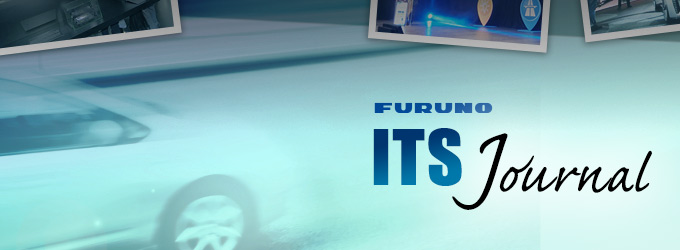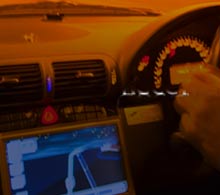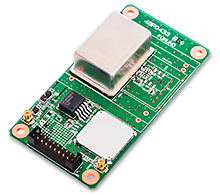Articles for ITS market The "realistic" self-driving roadmap shown by the Japanese government and a hands-on report on the latest Subaru EyeSight X
The Future of Automated Driving
The Ministry of Economy, Trade, and Industry (METI) launched the "Automated Driving Business Study Group" in February 2015 to discuss the realization of automated driving through collaboration between industry, academia, and government.
As of April 2022, the latest data presented by the "Automated Driving Business Study Group" is the draft report version 6.0, published on March 25 of the same year.
One of the most interesting figures is the chart "Toward the realization of the desired future vision" for owner-operated cars (private cars).
On the horizontal axis, the year 2022 is used as the base year, followed by the year 2025, and then the year 2030 and beyond.
The vertical axis is a distribution of the introduction area, with owner-operated vehicles in the wide area. And service vehicles (commercial vehicles such as trucks, buses, and cabs, as well as public transportation) in the narrow area.
Regarding owner-operated cars, they stated that Level 1-2 automated driving will be in widespread use by 2022, and that the introduction of Level 2 and Level 3 cars will be promoted by 2025.
Level 1 is a form of driving assistance that follows the car in front in the same lane. Level 2 includes advanced assistance with automatic lane changes.
At Level 3 and above, the idea is that the driving system is integrated into the car's system. Discussions have been underway at the United Nations regarding the balance between legal interpretation and actual products. Among Japanese manufacturers, Honda is producing the world's first Level 3 passenger car on a limited basis since 2021.
Now, it is noteworthy in the chart that even after 2030, automated owner-car operation will remain at Level 2-3, with the aim of further spreading its use.
They have stated that it will continue the framework of ADAS (Advanced Driver Assistance Systems) for Levels 2 to 3. In other words, there is no rush to raise the entire automobile industry from ADAS Level 2 to Level 3, which has stronger implications for automated driving.
On the other hand, as for service cars, we have determined that Level 4 service cars have already been introduced as of 2022. Moreover, the plan is to promote the introduction of Level 4 service cars at 40 locations in Japan by 2025, and to achieve full-scale diffusion of Level 4 service cars from 2030 onward.
In this evolution of owner and service cars, the two will work together on various requirements.
Specifically, maps, communication infrastructure, ergonomics, cyber security, and safety assessment will be incorporated into products and services as cooperative areas for service vehicles and shared with owner cars.
The idea is to reduce the cost-of-service cars by mass-producing hardware and software, such as sensors and cameras, for both owner cars and service cars.
Looking at this chart again, we can see the results of the government's all-Japan approach to discussing the technology, laws, international cooperation, human resource development, and other aspects of automated driving since the mid-2010s.
These charts on the future of automated driving have been presented as a public-private ITS roadmap.
ITS stands for Intelligent Transport Systems.
In the public-private ITS roadmap, the vertical axis is the level of automated operation, and the horizontal axis is the conditions of use of automated operation (Operational Design Domain).
In this conception, the goal was Level 5 fully automated driving, and the owner car and service car would work together to achieve that goal.
In the 2020s, when automated driving and ADAS will be in full use, the roadmap has changed to a "realistic" roadmap. It is more in line with social reality, rather than one that is more academic or technological from the manufacturers' perspective. Or based on the various automated driving demonstration tests that have been conducted in various parts of Japan and feedback from users and dealers in conjunction with the mass production of ADAS.
Furthermore, the new form of the public-private ITS roadmap is being discussed in the Digital Agency's "Study Group on the Digital Transportation Society," of which I (the author) am a member and which will be implemented in April 2022.
 Subaru "OUTBACK". At a parking lot on an expressway in the Kanto region. Photo by the author.
Subaru "OUTBACK". At a parking lot on an expressway in the Kanto region. Photo by the author.
 Subaru “OUTBACK” At a public road. Photo by the author.
Subaru “OUTBACK” At a public road. Photo by the author.
 Interior of “OUTBACK” Source: Subaru.
Interior of “OUTBACK” Source: Subaru.
 EyeSight X being tested on a test course. The vehicle is “LEVORG”. Source: Subaru.
EyeSight X being tested on a test course. The vehicle is “LEVORG”. Source: Subaru.
For the time being, advanced level 2 maturity for owner cars
As the draft version 6 of the report of the Automated Driving Business Study Group indicates, owner-operated cars are likely to be mainly automated level 2 for the time being.
As a basis for such a future vision, we experienced again the Subaru "EyeSight X," latest Level 2 compatible system.
EyeSight X enhances ADAS functions by combining location information from GPS and the Quasi-Zenith Satellite "MICHIBIKI" with three-dimensional high-precision map data. Along with lane-by-lane road information on automobile-only roads that meet certain conditions.
The test vehicle is the Outback, which Subaru launched in October 2021. All models are equipped with EyeSight X as standard equipment.
The test drive was conducted over four days in the Kanto area, mainly in Tokyo, and covered about 400 km on highways and ordinary roads.
To activate EyeSight X, first turn on regular EyeSight on a travelable road. Then, when the dashboard indicates that EyeSight X can be activated depending on the acquisition status of three-dimensional map data and satellite positioning information, the driver turns on the EyeSight X activation button.
EyeSight X, for example, allows the driver to take his/her hands off the steering wheel when certain conditions are met between 0 km/h and 50 km/h in a traffic jam. When the car in front of you in a traffic jam comes to a complete stop, you also stop, when the car in front of you starts to move, the EyeSight X will automatically start up as well.
As for my impression of using both regular EyeSight and EyeSight X in traffic, I have to admit that I am not comfortable with taking my hands off the steering wheel completely. But I found the automatic start from a stop to be very effective.
Active Lane Assist is a so-called "lane change" function. When the driver operates the turn signal at a speed of approximately 70 to 120 km/h, the system judges the surrounding conditions and automatically changes lanes. I found this function convenient and reassuring.
Other features include automatic deceleration in accordance with the radius of curves, which slowed down to about 10 km/h above the legal speed limit (when the driving speed is set higher than the legal speed limit by EyeSight X), thus balancing the flow of traffic around the vehicle.
In addition, a function that automatically decelerates the car before an expressway toll booth allows the car to slow down to a speed of approximately 20 km/h, which is the speed recommended by the road operator. However, many cars only slow down to 30-40 km/h, giving the impression that they are being hailed as they pass through the toll booth.
The regular EyeSight is Level 2 automatic driving, and EyeSight X would be interpreted as "advanced Level 2”.
Subaru's EyeSight developer explained that "the hurdle for Level 3 mass production is very high."
In the 2020s, it is expected that the mass production of EyeSight X will be expanded, and further technological advancements will be made while continuing Level 2.
Writer introduction

Mr. Kenji Momota Automotive journalist
His major is the world automotive industry and he is also familiar with the energy industry, IT and the aging society problem as the related fields. He acts around the world based in Japan and USA and writes for the general magazines, the technology journals and the automotive related media etc.
He is also commentator of motor race and world's motor show on TV program based on his career of the driver of Indy Racing League and NASCAR. In recent years, he has been covering about a paradigm shift from developed countries to developing countries, the motorized vehicle like EV and the telematics.
FURUNO ITS Journal
Click here for the latest articles after 2022 (in Japanese)2022
- The "realistic" self-driving roadmap shown by the Japanese government and a hands-on report on the latest Subaru EyeSight X
- Will FCVs (Fuel Cell Vehicles) Become Popular? ~New Movement in Toyota and Honda~
- The 'Complete' online sales of new cars start in Japan. Will this new way of buying cars take root?
- Many Firsts! On-Site Report from Tokyo Auto Salon 2022 - The author, who knows what goes on behind the scenes, looks back on 40 years of history. -
2021
- "Moving toward zero traffic fatalities for four-wheeled and two-wheeled vehicles globally in 2050" ~Experience on Honda's latest safety technologies~
- Tsuneishi Shipbuilding's building and DX, an exclusive visit to the main factory
- Japan's Smart City: New Moves toward Practical Use
- When will self-driving buses (service cars) be put to "full-scale" practical use?
- Utilization vehicle data during disasters
- Toyota-led Connected Technology to Transform Commercial Vehicle Business -From light trucks to large trucks and buses-
- Toyota enters the connected car "Personalization" business
- Japanese automakers' carbon-neutral strategies swept up in ESG investment
- Drive experience of the latest autonomous vehicle models and advanced driving support systems
- Will carbon neutrality accelerate the trend to strengthen LCA (Life Cycle Assessment)?
- Semiconductor shortage exposes realities of the automotive industry
- Online Autonomous Driving Contest Enhancing development of Human Resources
2020
- What happens to CASE when gas cars are banned in Japan?
- When will Flying Cars be launched?
- Expectation vs. reality:Autonomous Driving in Japan
- V2X, Becoming increasingly important in autonomous driving
- Technology of Subaru “EyeSight X”
- Lifestyle-oriented French cars gain popularity in Japan
- Human-oriented smart cities are wanted
- MaaS and CASE, how would automotive industry change after COVID-19?
- The beginning of virtualization era, triggered by COVID-19
- Trend of EV shift and consumer demands
- TOYOTA Press conference about ADAS - Releasing algorithm for "sudden acceleration suppression during attempted sudden acceleration" free of charge -
- The Japanese automotive industry in 2020 - 3 turning points -
- "Using a smartphone while driving" and "Level 3 automated driving"
2019
- Motor show business model is at a turning point - Tokyo Motor Show Report -
- Commercialization and monetization of MaaS - ITS World Congress Singapore Report -
- Android Automotive pays attention to V2X - Report from the Frankfurt Motor Show 2019 in Germany -
- Automobile Distribution Revolution and DCM (Data Communication Module)
- Connected business potential and newly proposed "eMaaS" by Honda
- 5G services for practical use are multiplying
- Connectivity technologies attracting attention due to frequent traffic accidents
- Shanghai Motor Show report -SUV, EV, Automated car & 5G-
- Drone Business roadmap and updates to Michibiki (Quasi-Zenith Satellite System)
- MaaS (Mobility as a Service) "town development." Full-scale promotion for a national project
- CES organizer states "Data Period in 2020s." Transformation of the Automotive Industry in CES, US "-CES2019 Report-"
- "Return to Origin" directed towards the age of change, automatic operation and connectivity
2018
- New proposal for Private Car Automated Driving Level and other Hot 5G Technology Topics
- Standardized EV charging infrastructure concerns in Europe, US, Japan and China - Kobe EVS 31 field report -
- Touring a pure car carrier and a test drive of the latest hybrid car
- Planning stage products are exhibited at the newly established visualized mobility service "TOYOTA MOBILITY SHOWROOM".
- Potential “Community Car-share” program promoted by local residents
- CES Asia Report 2108
- Companies attempt new Vehicle-to-Infrastructure communications, including traffic volume measurements and vehicle positioning. -ITS Asia Pacific Forum in Fukuoka-
- Geneva show in Switzerland. Flying cars and MaaS (Mobility as a Service) were hot topics.
- EV (Electric Vehicle) proposals by country
- MaaS competition through service mobilization, M & A and technical field collaboration is accelerating. - The CES 2018 Report -
2017
- Big data’s initiative and fight for the automotive industry. Cooperation among companies becomes increasingly important.
- Connected car and road-to-vehicle communication automatic operation
- ETC (Electronic Toll Collection) and ETC2.0. Current situation and projected future
- Rapid development of sharing economy
- Germany is first to recognize level 3 automated driving
- ITS EU 2017 Field Reports -Automatic Operation and the eCall-
- From Infotainment to ITS, the competitive area is spreading in the car big data industry.
- GTC (GPU Technology Conference) Report and the de facto standardization of AI (artificial intelligence)
- Renesas' new challenge! "e-AI Solution" and "Renesas Autonomy"
- The Automobile industry is shifting from a manufacturing industry to a service industry.
- The movement toward accident countermeasures for aging drivers in Japan
- Fusion of ride sharing and fully automated driving is advancing in the USA.
2016
- Overview of the Quasi-Zenith Satellite System (QZSS) and advancements toward full-scale practical use including the Tokyo Olympic Games - G-space EXPO 2016 report-
- Japan’s automated driving project "SIP-adus" will be a large demonstration experiment.
- The International Home Care & Rehabilitation Exhibition. There were many car manufactures with exhibits booths at this show.
- Japanese car manufacturers starting to concentrate on strengthening the ADAS system
- A new movement of legislation for autonomous cars
- Cyber Security and “AGL”, the new OS for automotive are hot topics in the connected car industry
- “High precision 3D map” the key future of autonomous car and pedestrian dead reckoning
- Chinese “BAT” is accelerating their business in the EV (Electric Vehicle) market
- Tesla's original connection to Taiwan and the new transportation system technologies.
- "The main topic" of the Geneva Motor Show was how to strengthen "pedestrian protection"
- The probe data business is getting more competitive
- Reporting directly from the 2016 CES show "Data services will soon become the main revenue source of automotive industry"
2015
- Do the automated driving systems need the GNSS (Global Navigation Satellite System) ?
- ETC Version 2.0 is coming soon. A new service was announced at the Tokyo Motor Show and the possibility that is could be used as a device for older drivers.
- "Connected Horizon" and "eHorizon". Germany's leading parts supplier accelerates strengthening of "Big Data" for business



 Roadmap for automated driving, as described in the first draft version 6 of the report of the "Automated Driving Business Study Group," Ministry of Economy, Trade and Industry (METI). Source: Ministry of Economy, Trade and Industry.
Roadmap for automated driving, as described in the first draft version 6 of the report of the "Automated Driving Business Study Group," Ministry of Economy, Trade and Industry (METI). Source: Ministry of Economy, Trade and Industry. GPS/GNSS Receiver&Chips and Modules (positioning and timing)
GPS/GNSS Receiver&Chips and Modules (positioning and timing)